Bridges have connected shores, valleys and communities for centuries. This collection presents significant bridge structures from different periods and regions. From medieval stone arches to modern steel constructions, these works demonstrate the evolution of engineering. The 16th-century Rialto Bridge in Venice spans the Grand Canal with a single stone arch. The Golden Gate in San Francisco extends 2.7 kilometers, connecting the city with northern California. In Singapore, the Helix Bridge forms a pedestrian connection across Marina Bay with its double spiral structure. These constructions serve practical functions in urban transport while defining the skylines of their cities. They document technical solutions to geographic obstacles and show different approaches to bridge building across the centuries.
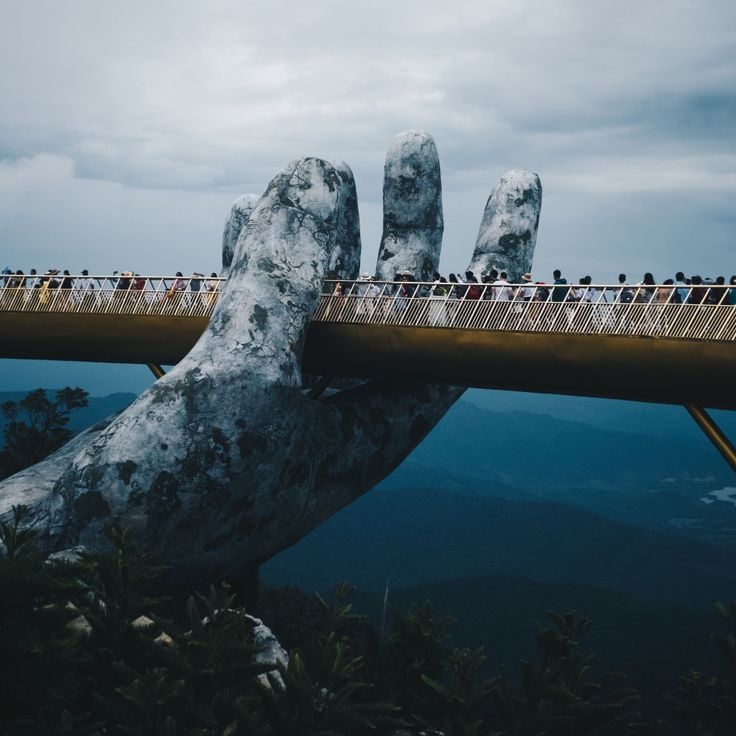
Ba Na Hills, Vietnam
This bridge in Ba Na Hills connects two sections of the mountain resort at 1,400 meters elevation. The structure is supported by two massive concrete formations shaped as human hands emerging from the hillside. Eight fingers hold the golden walkway that extends 150 meters through the forest. Since opening in 2018, the pedestrian path provides access to gardens and observation points.
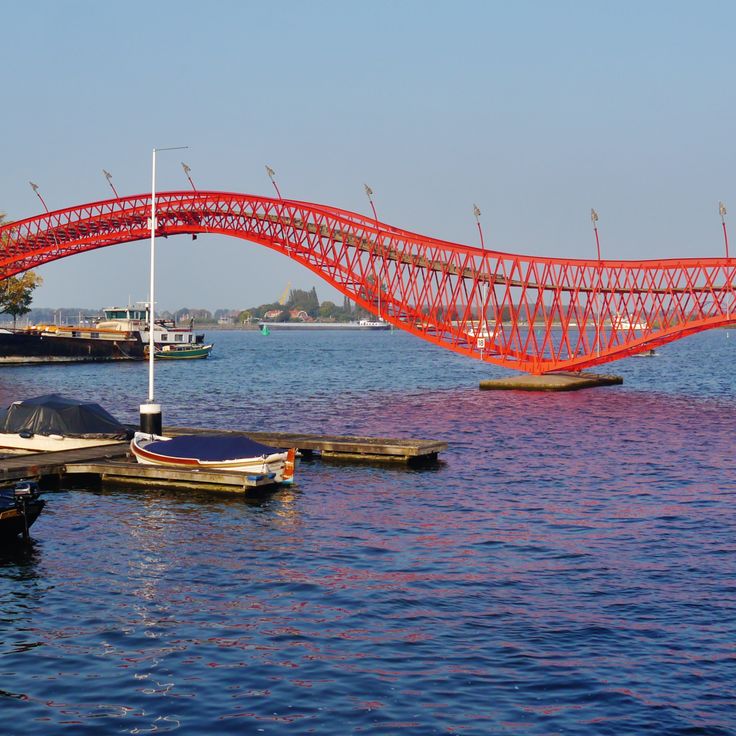
Amsterdam, Netherlands
The Pythonbrug connects the artificial islands of Sporenburg and Borneo-Eiland in Amsterdam's Eastern Docklands. This 93-meter steel pedestrian and cycling bridge features a serpentine design that resembles a snake. The red-painted structure stands out against the surrounding modern architecture. Completed in 2001, this crossing provides a direct connection between two former industrial districts that have been transformed into residential areas.
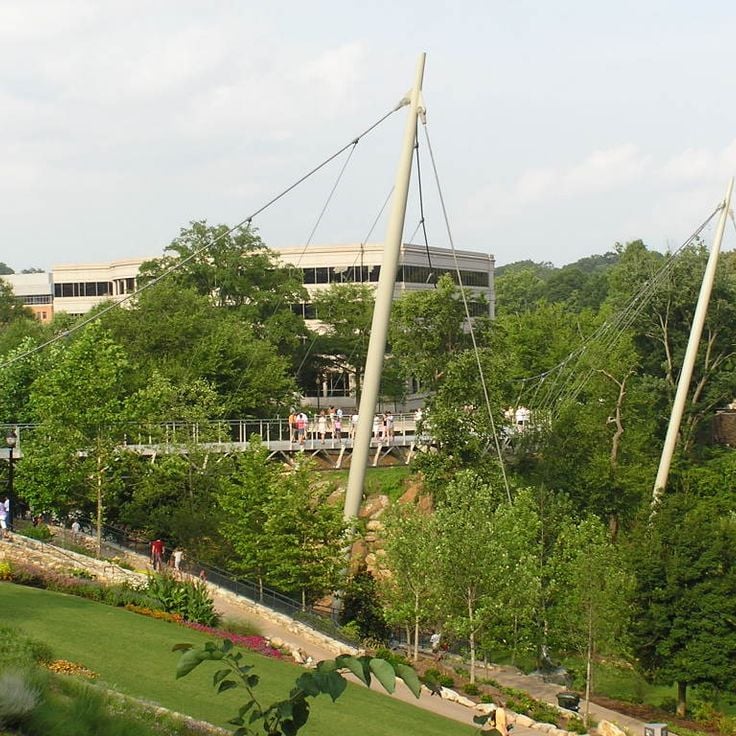
Greenville, United States
The Liberty Bridge spans the Reedy River in downtown Greenville with a length of 108 meters. This steel and concrete pedestrian bridge opened in 2004, connecting Falls Park to the city center. The curved structure is supported by a single central pylon stabilized by steel cables. The bridge arch provides unobstructed views of the Reedy River Falls below. The design allows for a clear span without additional support piers in the riverbed.
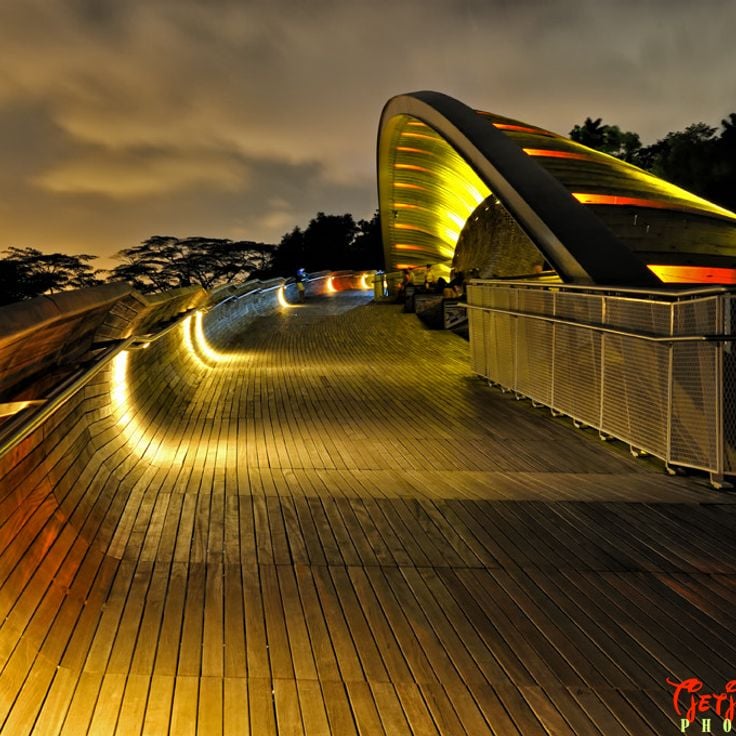
Singapore
Henderson Waves connects Mount Faber Park to Telok Blangah Hill Park, rising 36 meters above Henderson Road. This pedestrian bridge extends 274 meters and features a wave-like structure made of steel and timber. The curved ribs form sheltered seating areas that provide protection from sun and rain. The bridge forms part of the Southern Ridges Walk, a ten-kilometer trail linking several parks across Singapore's southern region.
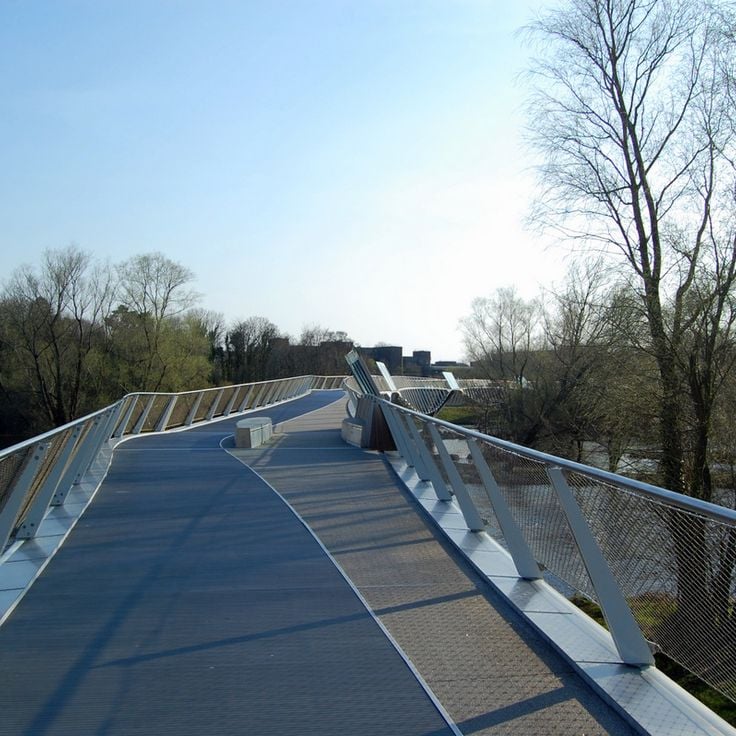
Limerick, Ireland
The Living Bridge connects the main campus of the University of Limerick with the arts and humanities precinct. This pedestrian and cyclist bridge spans the Shannon River across 350 meters and serves as a daily crossing for thousands of students. The structure was completed in 2007 and features contemporary architectural design. The name reflects its function as an active connection between different university areas. From the bridge, views extend across the river and the surrounding shorelines.
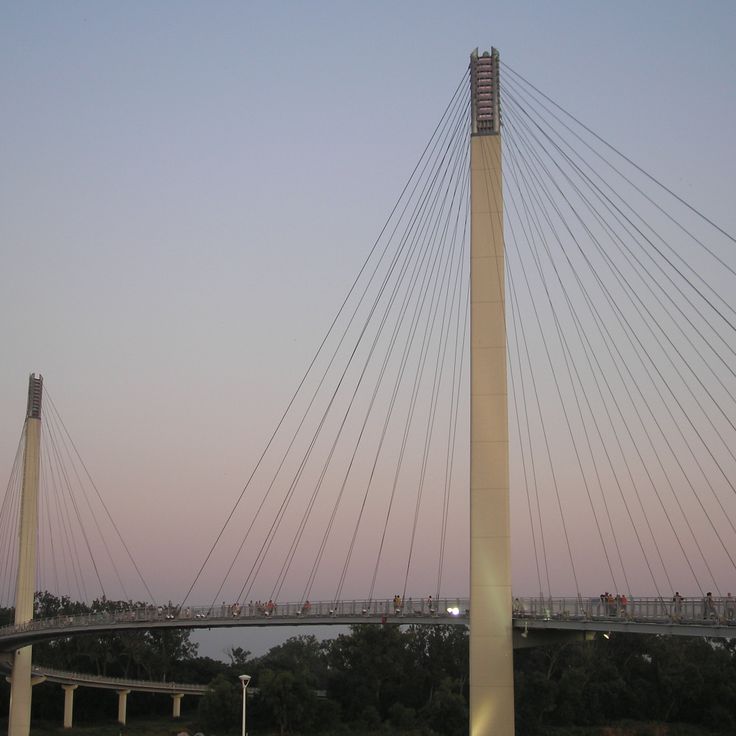
Omaha, USA
The Bob Kerrey Pedestrian Bridge spans the Missouri River, connecting the states of Nebraska and Iowa. This steel structure extends 1200 meters in length and features cable-stayed support systems. The bridge serves as a functional crossing for pedestrians and cyclists between the two states and provides access to the riverfront areas on both sides.
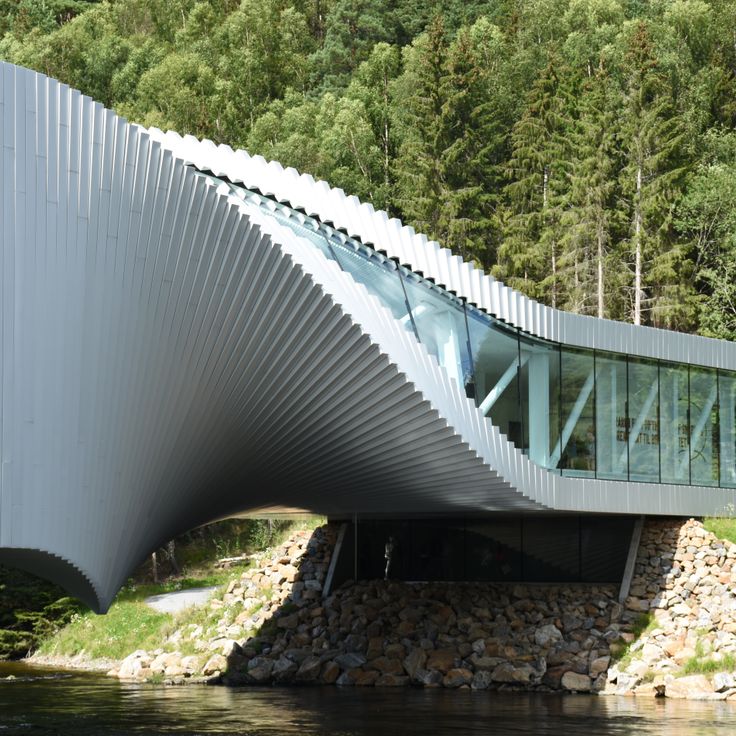
Kistefos Museum, Norway
The Twist is a walkable building that spans the Randselva river at the Kistefos Museum. The structure connects both riverbanks and rotates 90 degrees along its 60-meter span. The building functions simultaneously as a bridge for visitors, an exhibition space for contemporary art, and an architectural object within the sculpture park. The aluminum facade reflects the surrounding landscape and river water. Designed by the Norwegian architecture firm BIG, this structure opened in 2019 and stands as one of the few inhabitable bridges worldwide.
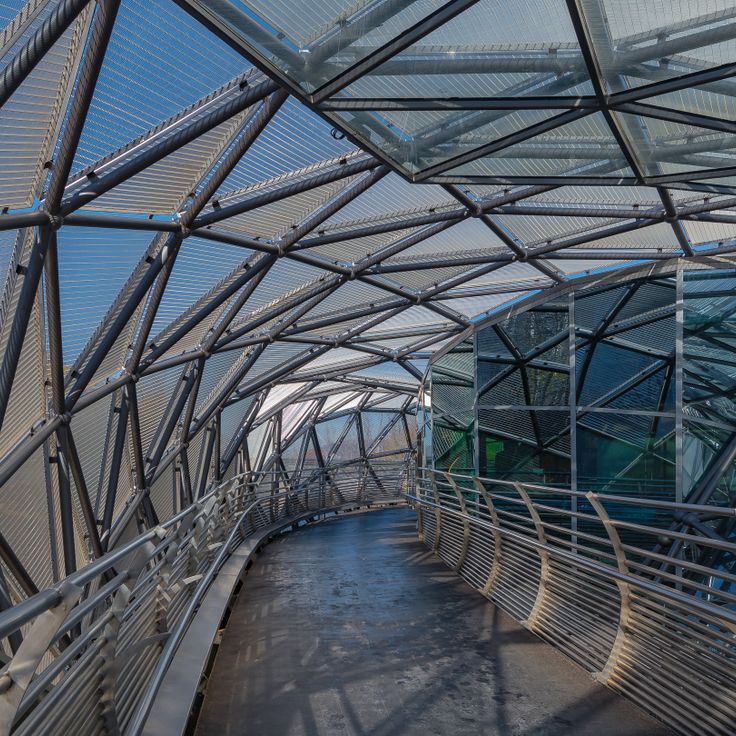
Graz, Austria
The Aiola Island structure has connected both banks of the Mur River in Graz since 2003. This steel construction was designed by New York artist Vito Acconci and serves as a pedestrian bridge with an integrated restaurant and bar. The shell-shaped structure extends over the artificial island in the Mur and provides dining areas with terraces. The structure stands in the center of Graz and links the historic old town with modern districts. The bridge is part of the cultural redesign of the riverfront and is used daily by locals and tourists.

Venice, Italy
The Rialto Bridge was constructed between 1588 and 1591 following the designs of architect Antonio da Ponte. The structure, built from Istrian stone, spans the Grand Canal with a single arch measuring 28 meters in width and rises 7.5 meters above the water. The construction includes two inclined ramps connected by a central portico, along with 24 shops distributed along three parallel walkways. This bridge replaced several previous wooden structures and remained the only pedestrian crossing over the Grand Canal until 1854.

Sanjiang, China
The Chengyang Bridge was built in 1912 by the Dong minority without using nails or screws. The structure spans the Linxi River and connects several villages in the region. The three stacked levels house pavilions with carved wooden panels and curved roofs. Five stone pillars support the entire wooden superstructure. The covered galleries serve both as a passage and as a meeting place for the local population. The architecture follows the traditional construction techniques of the Dong ethnic group.

Herdecke, Germany
The Ruhr Viaduct was constructed in 1879 by the Bergisch-Märkische Railway Company and connects both banks of the Ruhr River between Herdecke and Wetter. The structure consists of twenty rounded arches made of Ruhr sandstone, extending over a total length of 313 meters. The pillars reach heights of up to 35 meters above the water level. The viaduct continues to serve railway traffic on the route between Hagen and Dortmund, carrying regional and freight trains across the Ruhr River on a daily basis.
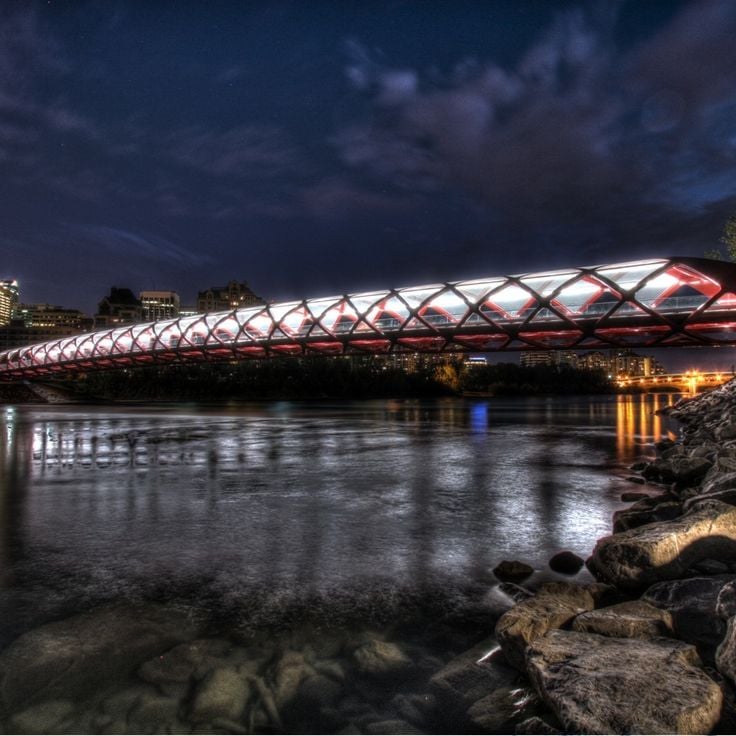
Calgary, Canada
The Peace Bridge connects the Sunnyside and Eau Claire neighborhoods across the Bow River. This pedestrian and cyclist bridge was designed by Spanish architect Santiago Calatrava and completed in 2012. The structure features a red-painted steel framework with a spiraling glass and steel canopy that spans 126 meters. The design combines functional engineering with sculptural elements, providing shelter from Calgary's weather conditions.
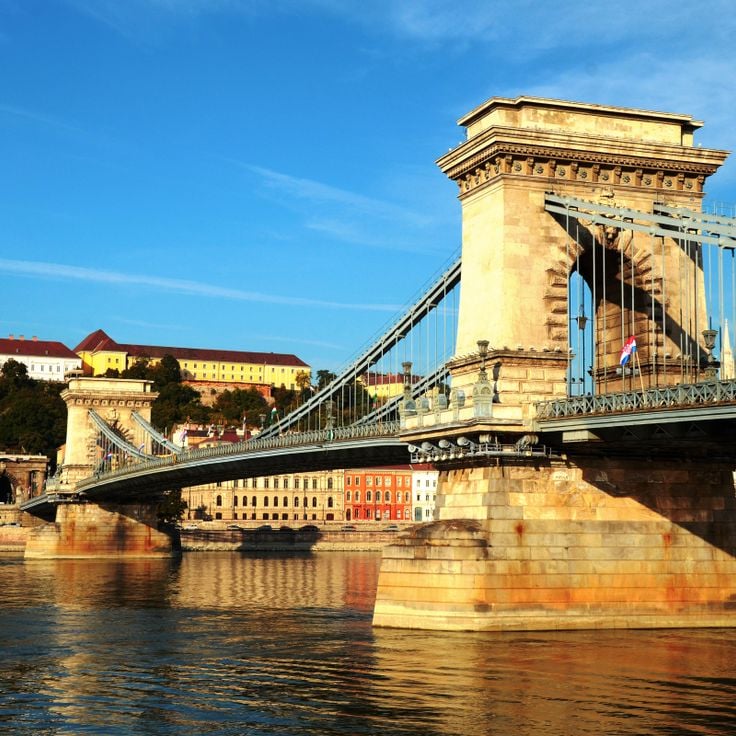
Budapest, Hungary
The Széchenyi Chain Bridge was the first permanent connection between the districts of Buda and Pest, constructed between 1839 and 1849 following the designs of English engineer William Tierney Clark. This suspension bridge spans the Danube River with a total length of 375 meters and is flanked at both ends by two massive stone towers in neoclassical style. The structure was destroyed during World War II and faithfully reconstructed between 1947 and 1949. The bridge connects Clark Ádám Square in Buda with Roosevelt Square in Pest and bears the name of Hungarian reformer Count István Széchenyi, who initiated the project.
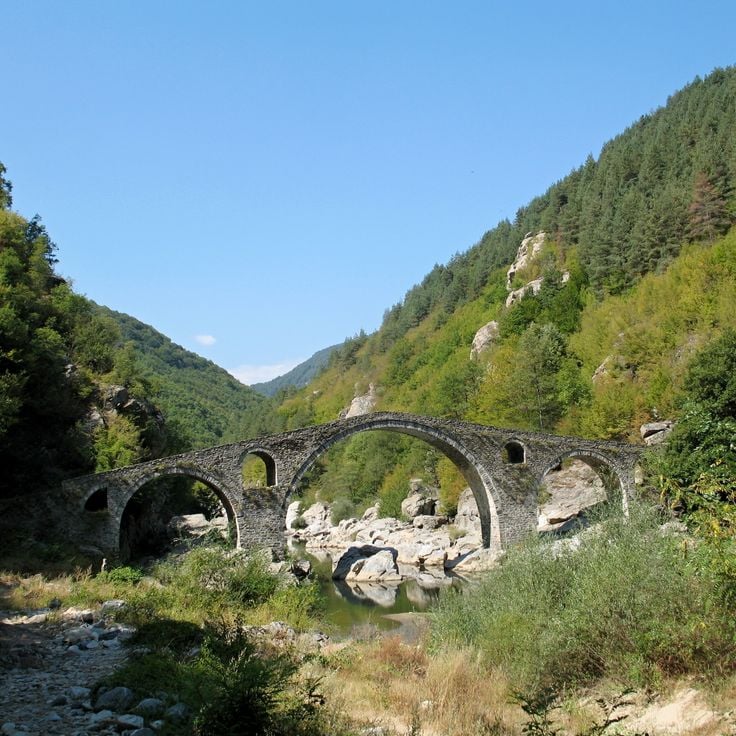
Ardino, Bulgaria
Dyavolski Most, known as the Devil's Bridge, spans the Arda River in southern Bulgaria. This stone arch from the 16th century was built during Ottoman rule and served as an important crossing on the trade route between the interior and the Aegean coast. The bridge features a high arch and solid construction using cut stone blocks. Local legends associate the structure with supernatural tales, which accounts for its name. Today, no traffic crosses the bridge, which stands within a protected natural area.

Komárno, Slovakia
The Elisabeth Bridge has connected the Slovak town of Komárno with the Hungarian town of Komárom across the Danube since 1892. This steel structure spans 494 meters and serves as an important border crossing between the two countries. The bridge was named after Empress Elisabeth of Austria and forms a central traffic route for cross-border trade and passenger transport in the region.
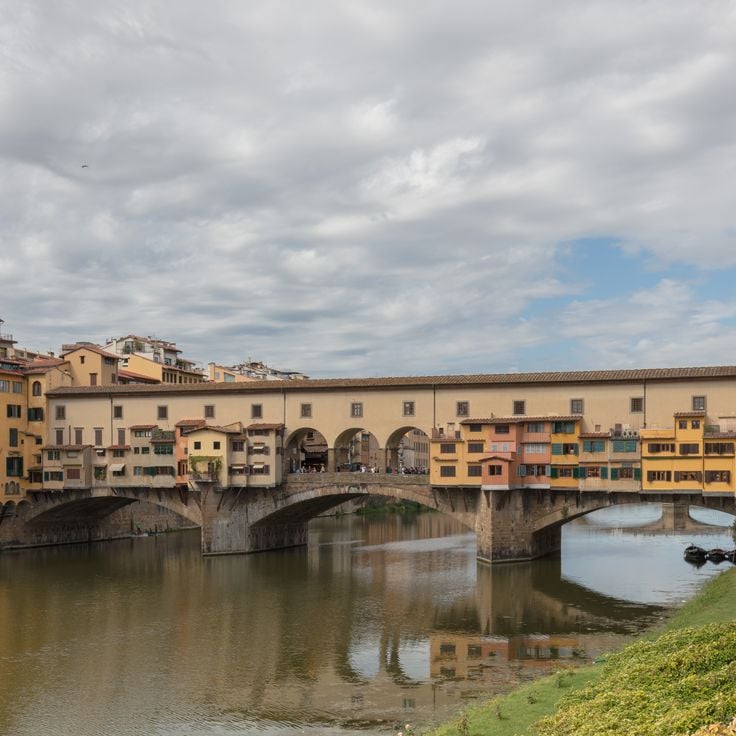
Florence, Italy
The Ponte Vecchio spans the Arno River since the 14th century with three stone segmental arches. This Florentine crossing features two-story buildings lining both sides, housing goldsmiths and jewelers since the 16th century. The elevated Vasari Corridor runs above the shops, connecting the governmental Palazzo Vecchio with the ducal residence at Palazzo Pitti. The structure survived as the only Arno bridge through World War II destruction and serves today as a pedestrian thoroughfare in the historic city center.
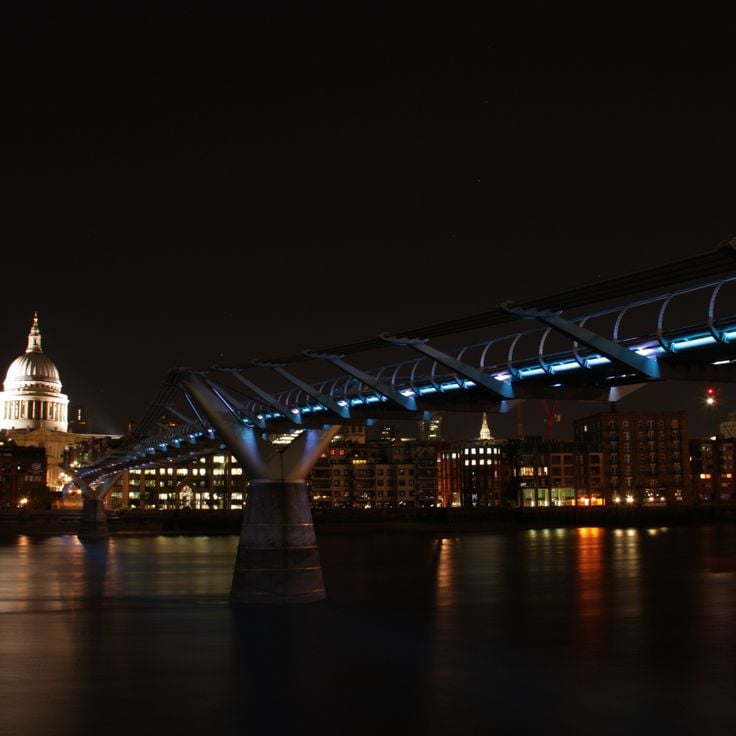
London, England
The Millennium Bridge connects the north bank of the Thames to the south bank through a 325-metre steel structure. This pedestrian bridge opened in 2000 and provides a direct route between St Paul's Cathedral and Tate Modern. The design by architect Norman Foster features slender suspension cables and a low profile that maintains views of the surrounding historic buildings.

Venice, Italy
The Ponte della Costituzione connects Santa Lucia railway station to Piazzale Roma on the opposite bank of the Grand Canal. Completed in 2008, this pedestrian bridge was designed by Spanish architect Santiago Calatrava and constructed from steel, glass, and Istrian stone. With its curved form and glass steps, this fourth bridge across the Grand Canal creates a contemporary contrast to Venice's historic architecture. The structure facilitates access for travelers between the transport hub and the city's historic center.
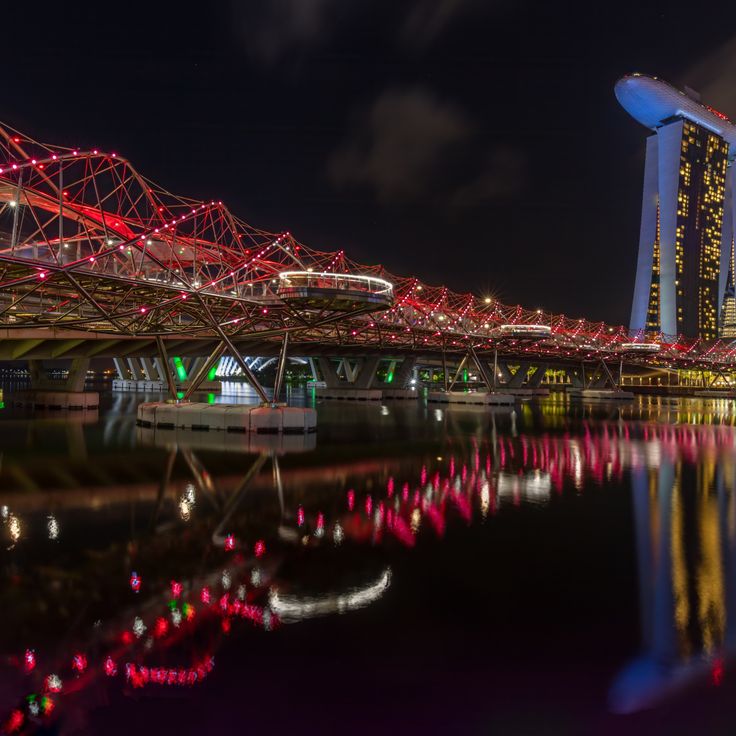
Singapore
The Helix Bridge spans 280 meters across Marina Bay, connecting the city center to the waterfront precinct. The stainless steel structure forms a double helix pattern inspired by DNA molecular structure. Pedestrians traverse the bridge via a covered walkway, while observation platforms along the route provide views of the bay. Opened in 2010, this construction serves as a pedestrian link between multiple districts and tourist attractions.
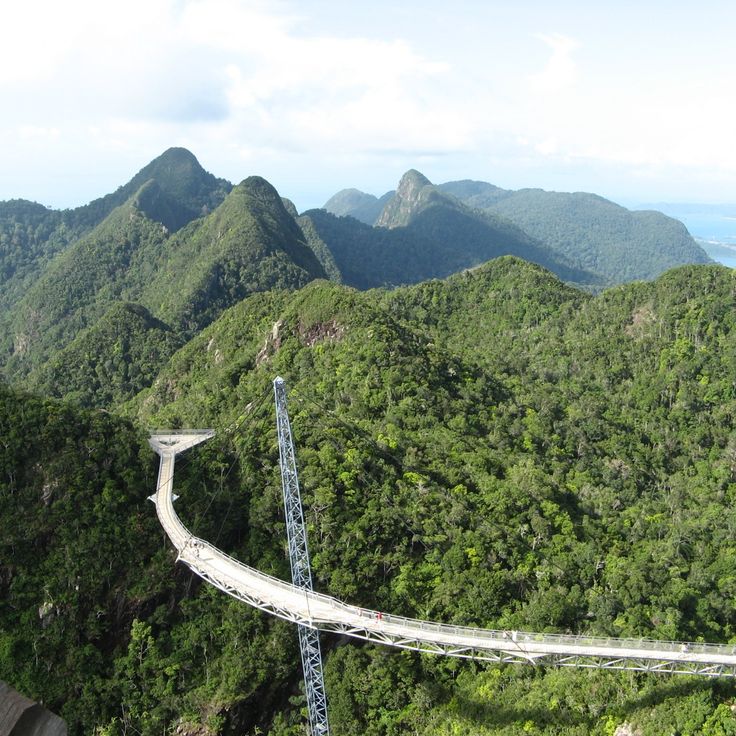
Langkawi, Malaysia
The Langkawi Sky Bridge is a curved steel pedestrian bridge suspended 700 meters above sea level on Mount Mat Cincang. The structure spans 125 meters in length and is supported by a single pylon. Visitors access this bridge via the Cable Car gondola lift and can observe the island's rainforests and the Andaman Sea from its walkway. The bridge opened in 2005 and its curved design follows the natural contours of the mountain ridge.
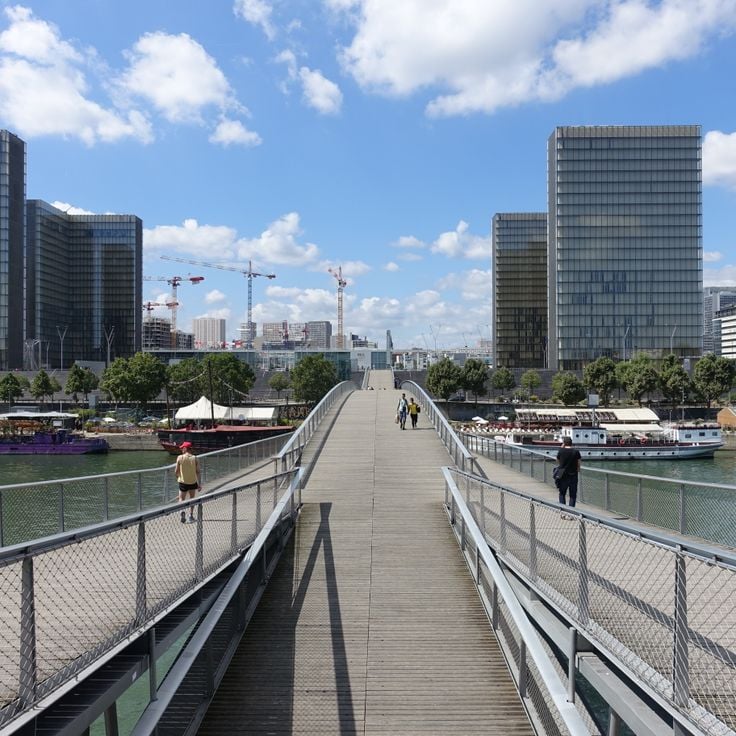
Paris, France
The Passerelle Simone de Beauvoir connects the 12th and 13th arrondissements across the Seine. This pedestrian and cyclist bridge features a 304-meter steel construction with a distinctive curved design. The structure incorporates two levels with paths that intersect at the center. Opened in 2006, the bridge was named after the French philosopher and writer.
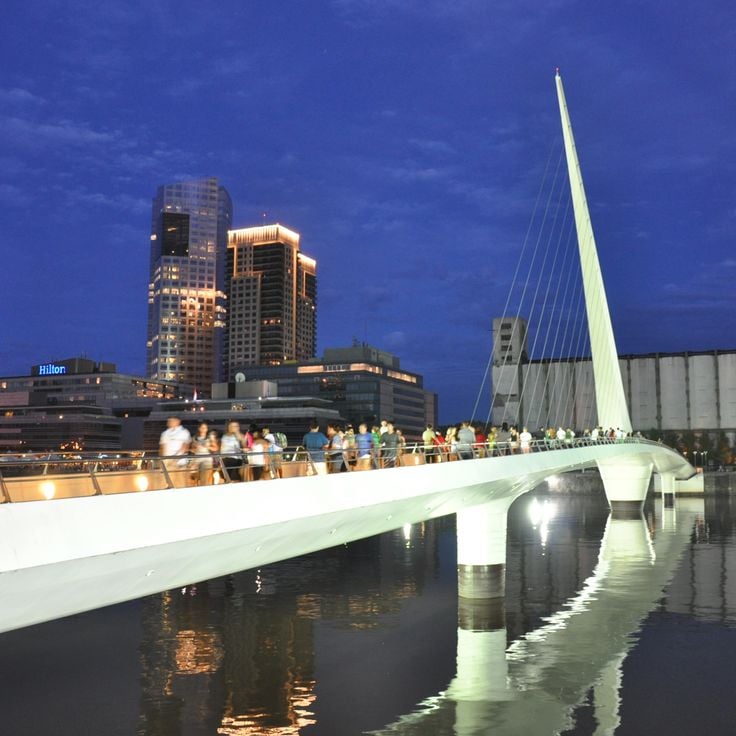
Buenos Aires, Argentina
The Puente de la Mujer connects the Puerto Madero docklands district with downtown Buenos Aires. Spanish architect Santiago Calatrava designed this pedestrian bridge, which opened in 2001. The asymmetrical structure features a white steel mast rising 39 meters above the water and a deck suspended by steel cables. The movable section rotates 90 degrees to allow ships to pass through. The design evokes a dancing couple and symbolizes the tango, Argentina's traditional dance.
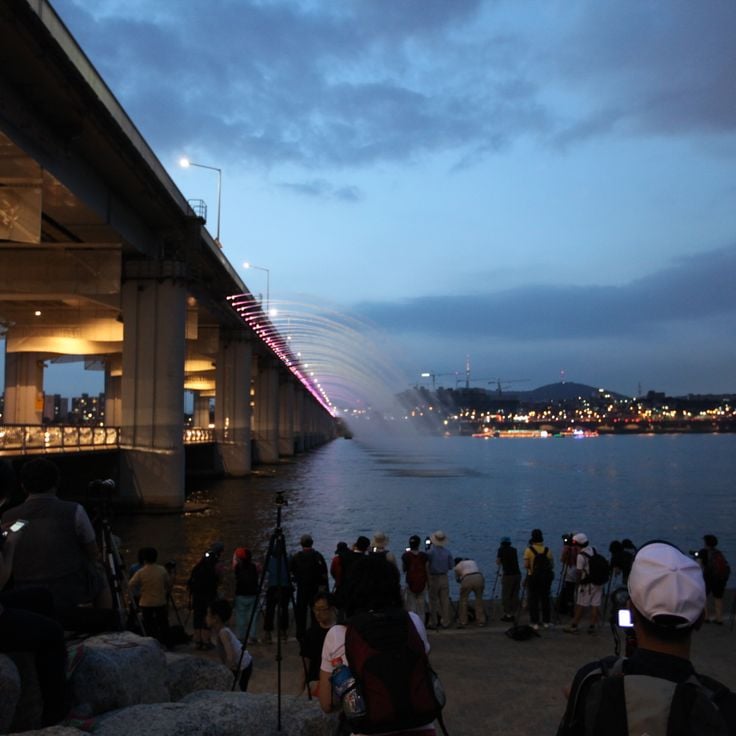
Seoul, South Korea
The Banpo Bridge spans the Han River and features the Moonlight Rainbow Fountain system. This consists of 380 nozzles installed on both sides of the bridge that pump water into the river below. The water jets extend up to 140 meters in length and are illuminated by LED lights in changing colors after sunset. The installation was inaugurated in 2008 and uses exclusively river water that is filtered and recirculated.

Prague, Czech Republic
The Charles Bridge has connected Prague's Old Town with the Lesser Town across the Vltava River since the 14th century. This stone bridge spans 516 meters and rests on 16 arches. Along its balustrades stand 30 baroque statues and statue groups installed between 1683 and 1928, predominantly depicting religious subjects. The bridge features three towers: two on the Lesser Town side and the Gothic Old Town Bridge Tower, considered one of the finest Gothic structures in Central Europe. Until 1841, the Charles Bridge served as the only crossing between the two riverbanks. Today it is reserved for pedestrian traffic and attracts thousands of visitors daily.
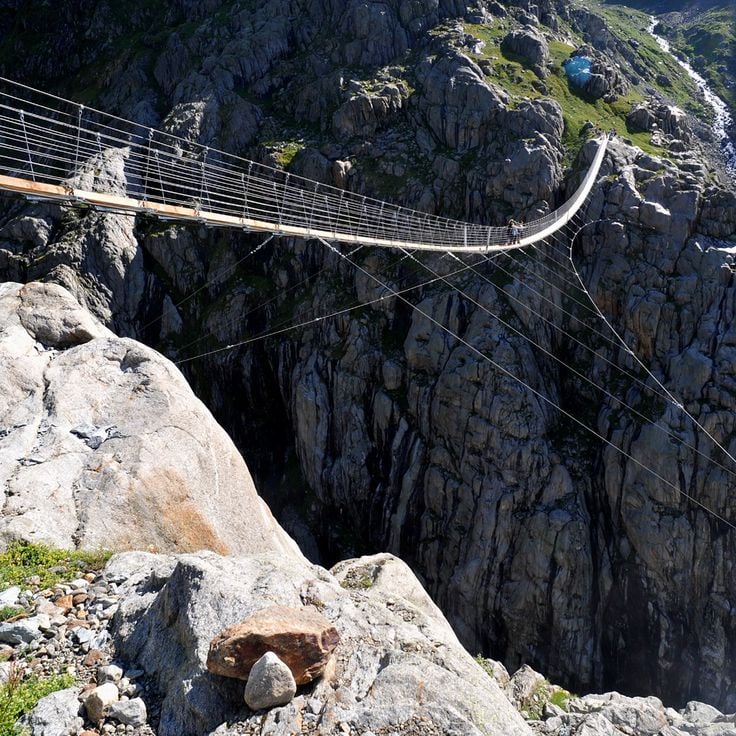
Gadmen, Switzerland
The Trift Bridge connects two rock faces across the Trift Gorge in the Gadmen Valley. This suspension bridge was first built in 2004 and replaced with a more stable structure in 2009. The crossing provides hikers with access to the Trift area and the glacial lake of the same name. The bridge sits at an elevation of 1720 meters and offers direct views of the retreating Trift Glacier. Access is via a roughly ninety-minute hike from the upper station of the Trift cable car or through longer routes from the valley floor.
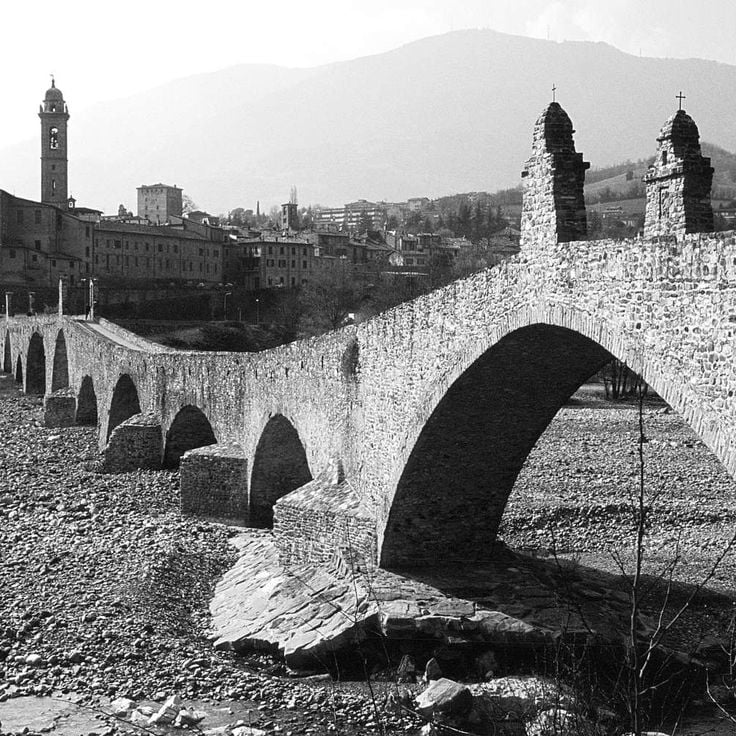
Bobbio, Italy
The Ponte Gobbo was built in the 7th century and connects both banks of the Trebbia River in Bobbio. This stone construction extends over 280 meters and consists of eleven arches of varying heights and widths, giving the structure its characteristic irregular course. For centuries, this bridge served as an important crossing point for pilgrims traveling to Rome and as a trade route between regions.
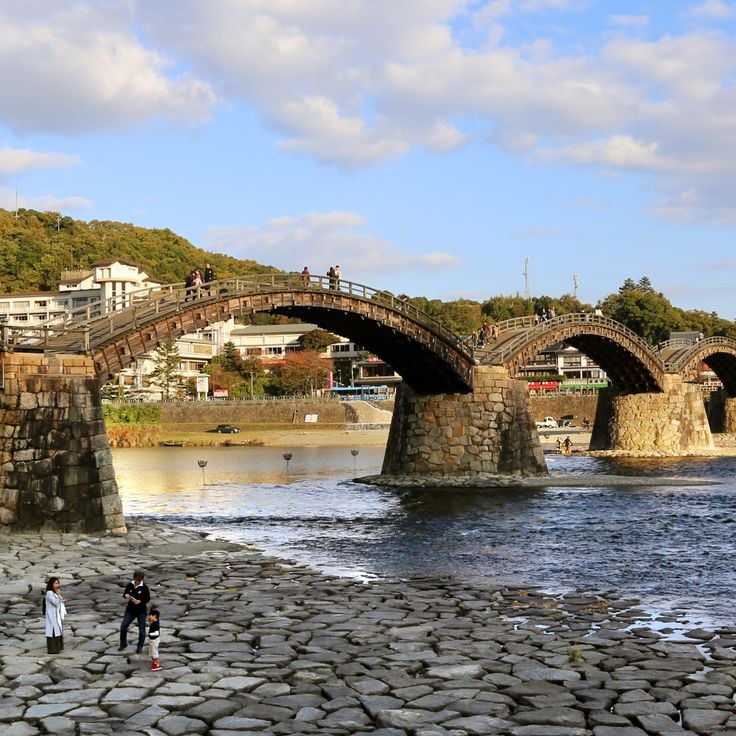
Iwakuni, Japan
The Kintaikyo Bridge spans the Nishiki River in Iwakuni with five wooden arches. This historic structure was built in 1673 and employs exclusively traditional Japanese carpentry techniques without metal fastenings. The bridge extends 193 meters in length and combines three central wooden arches with two stone piers at the riverbanks. Each arch rests on stone foundations and is supported by a complex system of interlocking timber beams.
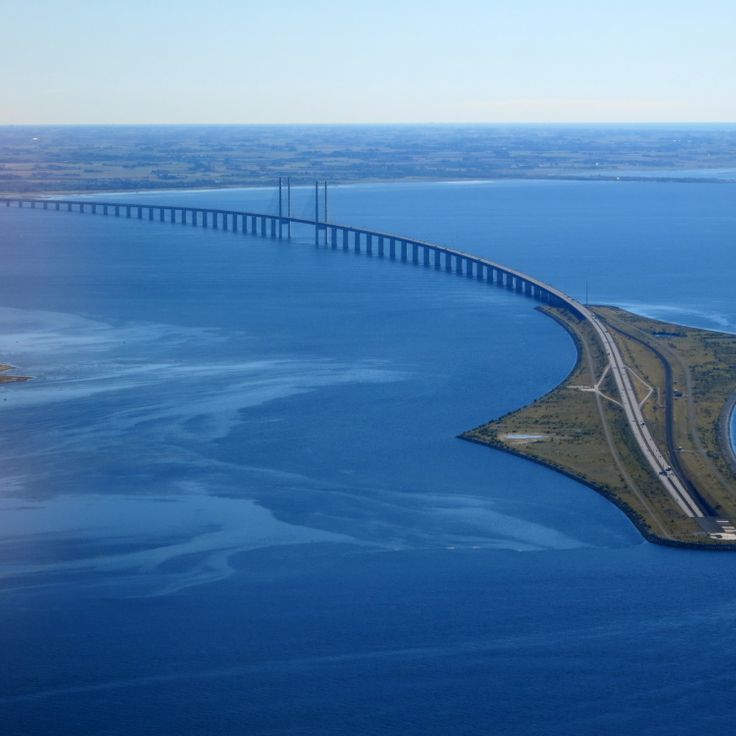
Malmö-Copenhagen, Sweden-Denmark
The Øresund Bridge connects Sweden with Denmark through a combined construction featuring a 4050-meter tunnel and a 3795-meter bridge. This transportation link spans the Øresund strait between Malmö and Copenhagen, accommodating both road and rail traffic. The western section begins as a tunnel on the Danish side and transitions into the high bridge at the artificial island of Peberholm, continuing to the Swedish coast.
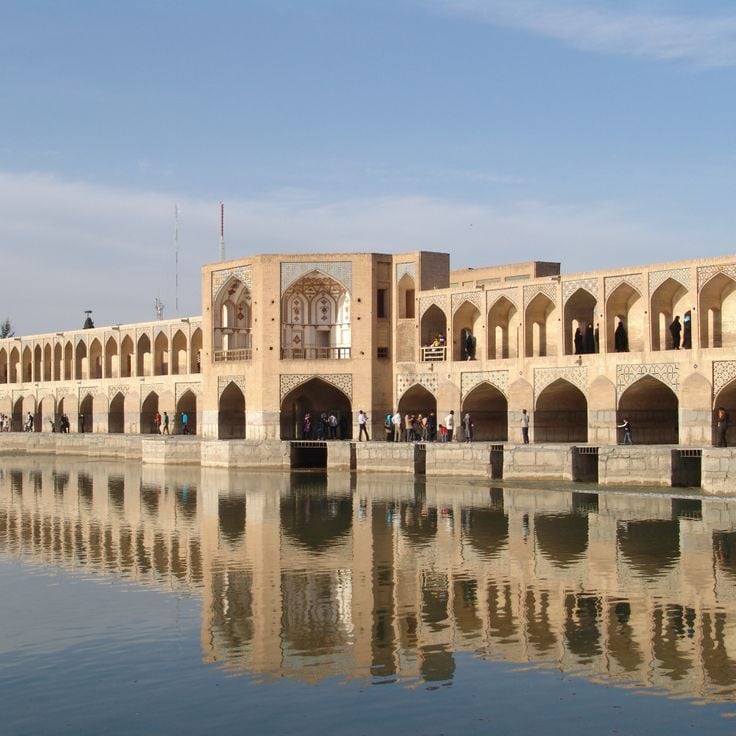
Isfahan, Iran
The Khaju Bridge was constructed in 1650 during the reign of Shah Abbas II across the Zayandeh River. This two-story structure of stone and brick spans 133 meters in length and features 23 arched openings. The bridge functions simultaneously as a weir to regulate water levels. Galleries and pavilions on both levels once hosted gatherings of residents and the Persian court for social occasions.
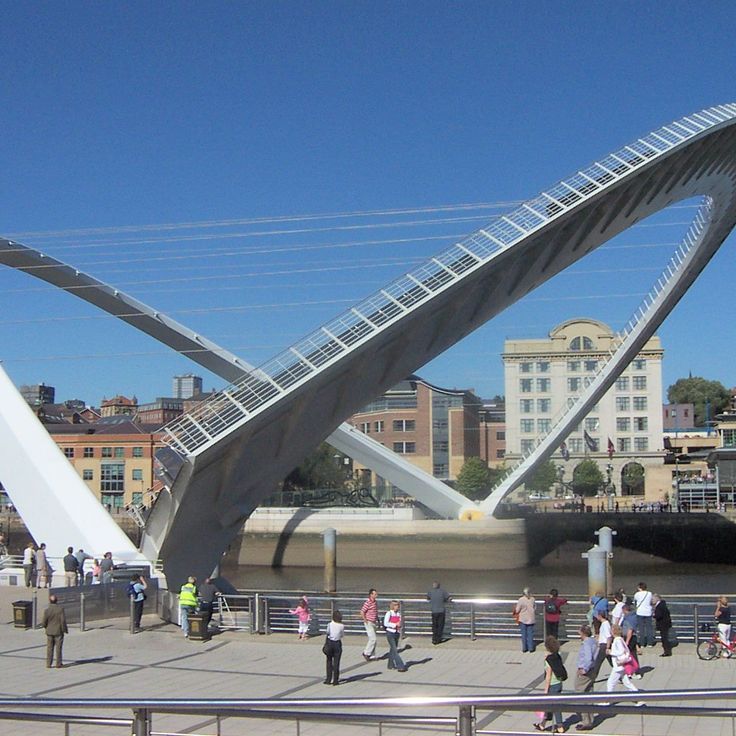
Newcastle, England
The Gateshead Millennium Bridge connects both banks of the Tyne through an innovative tilting mechanism. This steel and aluminium construction rotates on horizontal axes to allow ships to pass underneath. The pedestrian walkway measures 126 metres in length with a width of 7.6 metres and includes a separate cycle path. Opened in 2001, the bridge serves daily traffic between Gateshead and Newcastle.
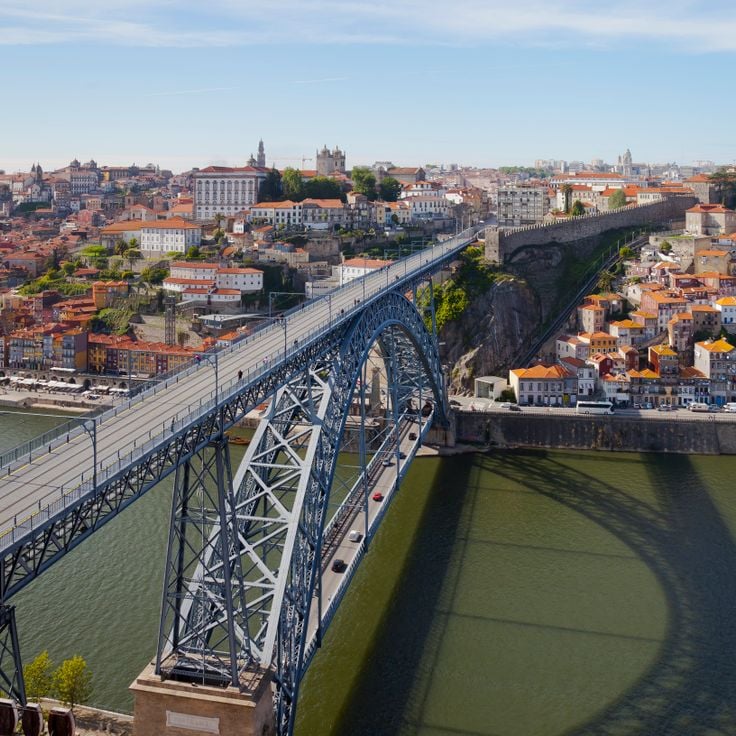
Porto, Portugal
The Dom Luís Bridge connects Porto to Vila Nova de Gaia across the Douro River. This steel structure from 1886 features two levels: the upper deck for metro and pedestrians offers wide views over the city and river, while the lower deck serves road traffic. The arch spans 172 meters.
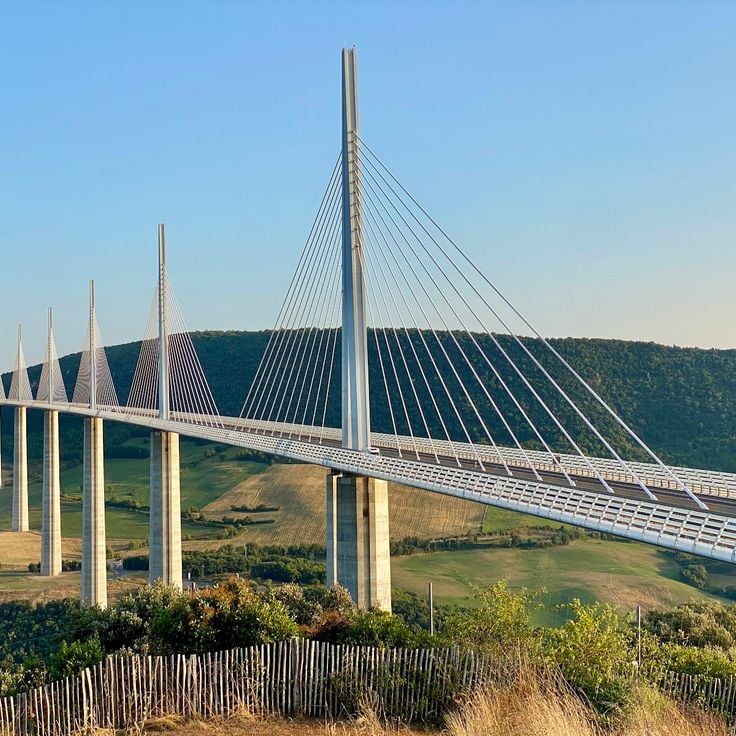
Millau, France
The Millau Viaduct crosses the Tarn River valley at a height of 343 meters above the ground. This cable-stayed bridge with a total length of 2,460 meters was designed by Norman Foster and inaugurated in 2004. Seven concrete pillars support a 32-meter-wide steel deck carrying the A75 motorway. The tallest pillar reaches 245 meters and, with its mast, achieves the total height of 343 meters. The structure connects the Causse Rouge with the Causse du Larzac and significantly reduces travel time between Paris and the Mediterranean.
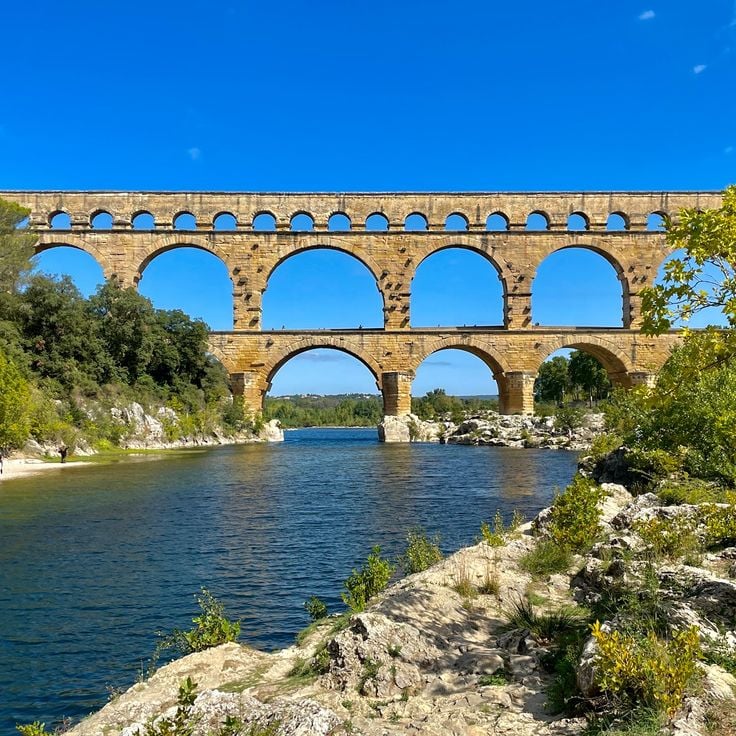
Vers-Pont-du-Gard, France
The Pont du Gard is a Roman aqueduct bridge from the first century AD that spans the Gardon River. This three-tiered structure rises 49 meters high and extends 275 meters in length. The construction once carried approximately 20,000 cubic meters of water daily from springs near Uzès to Nîmes across a distance of 50 kilometers. The engineering consists of precisely cut limestone blocks assembled without mortar.
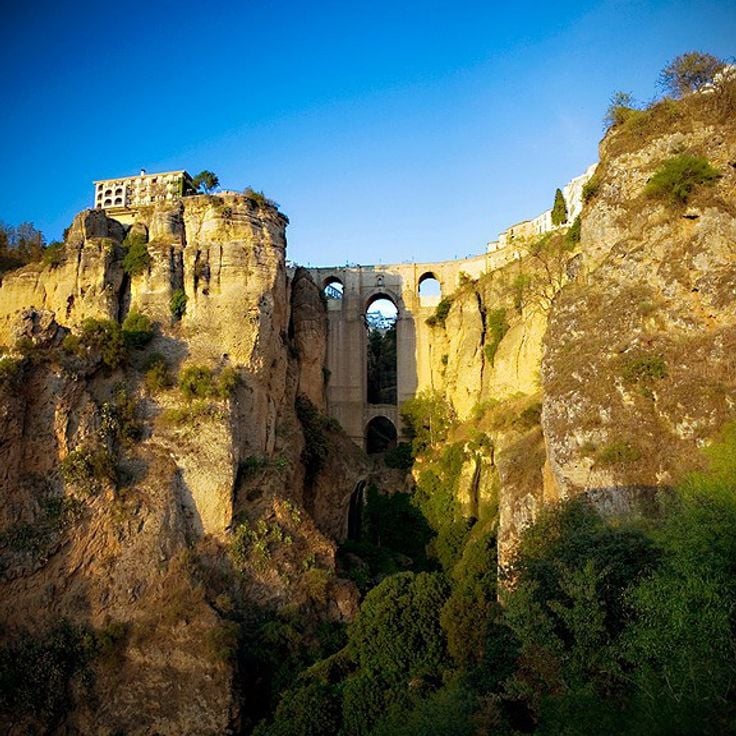
Ronda, Spain
The Puente Nuevo connects the two parts of Ronda's old town across the El Tajo gorge. This stone bridge was built in the 18th century and rises 98 meters above the Guadalevín river. The structure features three arches, with the central arch forming the main span. The upper chambers of the bridge once housed a prison and now contain an interpretation center about its construction history.
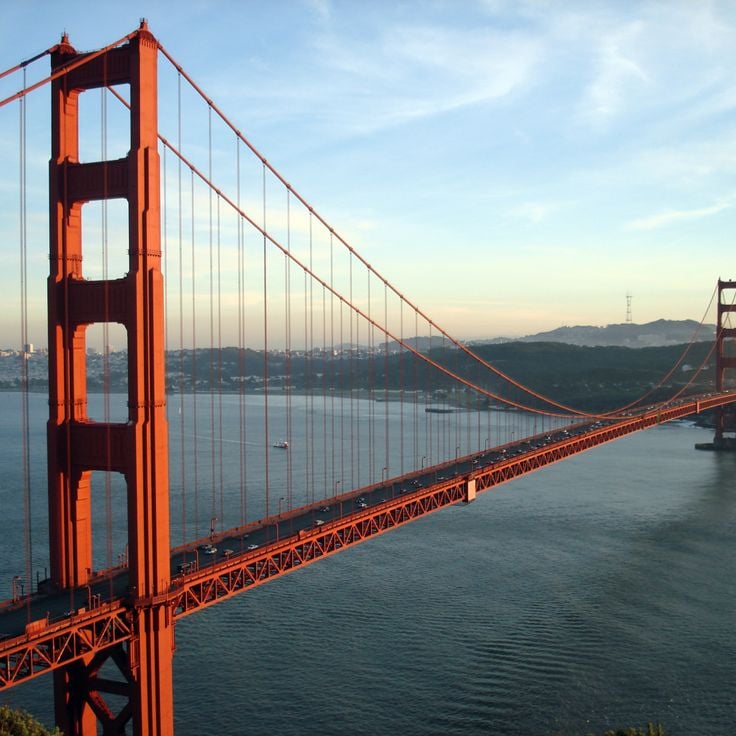
San Francisco, United States
The Golden Gate Bridge connects San Francisco to Marin County, spanning the strait at the entrance to San Francisco Bay. This suspension bridge was constructed between 1933 and 1937, measuring 2,737 meters in total length. The structure features its distinctive orange-red color, officially known as International Orange. The two main towers rise 227 meters above the water, while the main span measures 1,280 meters. Engineer Joseph Strauss led the construction project, which was considered a major engineering achievement of its time.
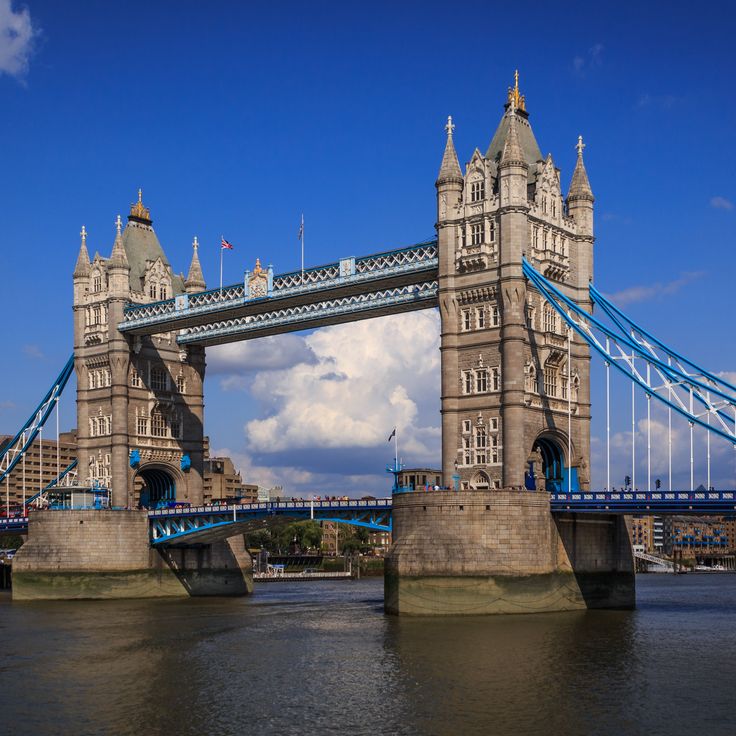
London, United Kingdom
Tower Bridge spans the River Thames in London and was constructed between 1886 and 1894 in Victorian style. This combined bascule and suspension bridge connects the boroughs of Southwark and Tower Hamlets. The distinctive Gothic Revival towers rise to 65 meters in height and house exhibition spaces and pedestrian walkways. The central section can be raised hydraulically to allow large vessels to pass through. The steel structure weighs a total of 11,000 tons and extends over a total length of 244 meters.